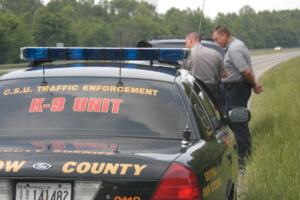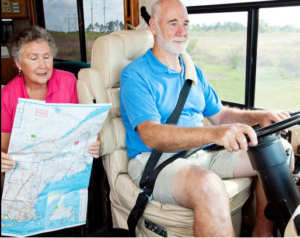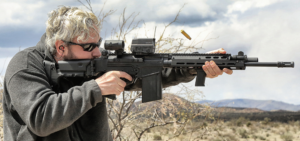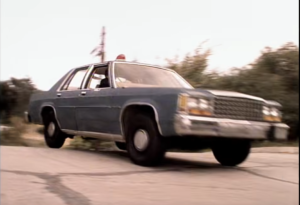(NOTE: This is Part One of a two part series. In this one, I will explain what interdiction is and my experiences with it; I will talk about the recent stop of the DSU Lacrosse Team bus in part two. But for the folks who don’t know what interdiction is, this is required reading. It’s a little rambling; I’m sorry about that.
And yes, mimicking Dave Grossman’s attempt to pass his stuff off as a scholarly treatise with his title choices is intentional; just in case any of you thought I was that far up my own ass. I never really expect anyone to read this stuff.)

Let’s talk about highway drug interdiction for a moment. (Or just “interdiction”; because that’s less of a mouthful. Honestly, I’m surprised Law Enforcement hasn’t come up with a catchy acronym for it, like so many other things.)
Drug interdiction isn’t a new thing. It’s been around in one form or another long before the 1980s, usually involving federal agencies and various military organization such as the Coast Guard and other regular military units; generally aimed at stopping the flow of drugs from the border and at the source. It became a major focus in the late 70s and early 80s, especially after the rise of the Medellin cartels and the Mariel boatlift.
Drug interdiction on interstate and local highways really got its start in New Mexico and New Jersey in the 1980s, especially along I95 from Florida. Their successes attracted the attention of the DEA, who quickly seized on this and began providing training and intelligence to local law enforcement. The DEA had already established the El Paso Intelligence Center (EPIC) in 1974, ostensibly to focus on “threats to the Nation, with an emphasis on the Southwest border”, and began adding law enforcement into their operations in the 80s. My second agency, the Barrow County (Ga) Sheriff’s Office, for instance, sent two narcotics investigators to work at EPIC for 6 month stints in the 2000s. EPIC’s mission might have had a wide brief of intelligence for LE, but much of the information we ever received or acted on was related to the smuggling of narcotics. Every five to six months, we might get a notice from EPIC of a smuggler who would be traveling on I85, and we would wait for them on the highway. Most of the time, they would get nabbed by another agency before they got to us.
So, how does local interdiction work?
It’s really amazingly, stupidly, simple.
You simply sit on the shoulder or median of a major highway, interstate or local; and just look as glaringly obvious as you can possibly can. At night you’ll have your headlights, or “takedown” lights- the white lights on the lightbar that are meant to illuminate the car in front of you- on so you can better see into the cars that pass, and wait for someone suspicious to drive by. You WANT to be seen, to be noticed from a long way down the road. What side of the highway is up to you- do you want to find drugs, or money? For I85, drugs flowed INTO Atlanta; and money flowed OUT of it. On state highway Ga 316, it was Athens.
Why is that; and what makes someone suspicious?
The idea- borne out by countless successful stops and even more unsuccessful, narcotics-wise, ones- is that someone who’s smuggling drugs or drug money will be extremely nervous and alert for the cops. When they pass you, you note their behavior- are they driving at precisely the speed limit? Arms locked out rigidly on the steering wheel, staring straight ahead, not glancing at you even for a second?
In other words, someone who just said “Cheezit! The cops!” and is now trying to do absolutely nothing to attract your attention. A lot of times you’ll find they’re in rental cars, rented by a third person, and have no idea who that person is. Rental moving trucks from U-Haul or Ryder are another good bet.
Of course, this means that you’ll pull over a lot of people who have a warrant or suspended license, or just a ¼ ounce of weed in the car, and are paranoid. All grist for the mill.

(As a side note, I always said that if I wanted to smuggle anything on the interstate, I’d use a kindly old couple who are gregarious and friendly, driving an RV. They’ll wave at the cops on the side of the road and drive merrily by.)
So, you’ve spotted a likely target and pull out behind them. Now you need a court-defensible reason to stop them, as “they didn’t wave at me when they passed” is hardly probable cause; or even reasonable articulable suspicion.
But that’s easy enough. You can find a moving or equipment violation on almost ANY vehicle on the road. Didn’t signal a lane change? Headlight out? Something hanging from the rear-view mirror, “obstructing the driver’s view?” Weaving within a lane? No county decal on the tag? If they’re not weaving, they will be when you zoom up behind them at high speed and park yourself an inch from their bumper. If it’s a commercial vehicle- a truck or bus- there’s a whole code section of violations you can find. Truck Troopers- excuse me, “Motor Carrier Compliance Division officers” (yes, there’s a lot of teasing in LE)– are usually the only ones to get that nit-picky; but you’ll use whatever reason you can find to pull them over.
This is what’s called a “pretextual stop”, and the only times I’ve ever used it was when I was working narcotics, SWAT, or interdiction.
Now; you’ve found a violation, and you pull them over. One of your backup units will be a K9 officer, who will walk the dog around the car while you talk to the driver. Rental car? Out of state license? Two passengers who, when you separate them and talk to them, give differing stories of where they’re coming from and where they’re going? That might be all you need. But you’ve got the dog there as your ace in the hole.
“But wait!” you say. “If the dog alerts to drugs in the car, why, that’s ironclad! They must be smugglers!”
Yeah. Except that the K9, no matter HOW assiduous the handler is in their training, really really wants to please their master. They get treats when they “hit”; so they WANT to hit. And even the most ethical, moral, 100% by-the-book handler gives off signals- signals that they don’t even realize they’re sending, and that the dog picks up on; signals that say “oh boy, I hope we get a hit!” Handlers are supposed to keep records on true hits and false ones, but no one ever looks at those in small town courts- and drug mules keep their mouths shut.
Not to mention what an unethical K9 handler can get away with.
So, now you’ve got PC for a more invasive search, one way or another. You could always articulate an “officer safety” reason to “frisk” the interior of the car; or get a search warrant… but cars are a special exemption to 4th amendment search and seizure rules; because they are “inherently mobile” and the time to get a warrant will be unreasonable. A K9 hit solves that right away- and although there is a whole body of case law on K9 hits and vehicular searches, you can bet that the LE doing interdiction know what all of them are and how to stay within court-acceptable limits but still get the job done.
Bingo, there’s drugs in the vehicle- possibly hidden in any number of very clever and intricate hidden compartments… OR, there’s more than $10,000 in cash.
Should it be illegal to have that much money on you? Are there legitimate reasons you might?
No, of course not; and yes, absolutely… but it’s very easy to articulate that you believe this money was the result of illicit activity and seize it; and very difficult to prove otherwise and get it back.
That’s the world we live in.
Barrow County wanted badly to get in on the interdiction game, as the small town of Braselton- that sat on the intersection of 4 different counties and had a 5 mile stretch of I85 in their

jurisdiction- had made absolute mad BANK on drug interdiction and asset forfeiture. This tiny northeast Georgia town had the best patrol cars, packed full of the best equipment, everyone with their own M4 rifle (at a time when patrol rifles weren’t that widespread) and paid amazing salaries to their officers… all thanks to the insane amounts of cash they were seizing on the interstate. That’s one thing about narcotics investigations and asset forfeiture; after a while, you’re more concerned with what you can seize and make your own than anything else. We once seized a bright yellow Hummer H1 that was stuck in limbo for a year while the case wound its way through the courts… I know every one in the narcotics office was hoping to make that their personal undercover car.
But to start off, the Traffic Unit was tasked with learning about interdiction and starting a program. We invited Lowndes County Sheriff’s Office, a deep south Georgia county on the Florida line along I75 and who had a flourishing interdiction unit, to Barrow on several occasions to teach those of us on the traffic unit how to do it. We only had 1.5 miles along I85- a very rich source of traffic- to work with; and about 20 miles of Ga 316 from Atlanta to Athens in our jurisdiction. Development along 316 was only beginning its meteoric rise in these days. Over several week-long sessions, we learned what to look for and all the tips and tricks necessary. And, we did seize a lot of drugs- and, more importantly, money- during that period.

(Although, we did freak the ever-living fuck out of the Lowndes County deputies. You see, their stretch of I75 had cable-stay barriers in the median- a steel cable “fence” designed to keep out of control vehicles who enter the median from making it to the opposite lanes; so they only had limited spots they could cross over the median and change direction. We had no such barriers on I85 or 316; and were used to diving into the median at 70mph, cutting the wheel and stomping the gas to do a bootlegger turn, squealing tires as we fish-tailed into the opposite lanes and heading the other way to catch a car going the opposite direction. What can I say; we were all raised on Dukes of Hazzard, Smokey and the Bandit, and the video to Beastie Boys “Sabotage”. They had never seen this and were convinced we were suicidal lunatics bent on carnage.
Well. Maybe a little.)
At one point, the Captain over Investigations,- whose real love was the narcotics unit, and was also the commander of the SWAT team of which I was the Entry Team Leader- asked me if I wanted to join Narcotics full time as the lead of an interdiction and “Heightened Enforcement Action Team”, or HEAT (gotta love those acronyms) unit, primarily focusing on interdiction, SWAT narcotics raids, and “pro-active patrols”.
That latter one consisted of the SWAT team, most of which were narcotics agents, cruising through a “high crime area” so we could jump out of our vehicles and question anyone hanging around “the usual drug trafficking locations”- which were majority black,- and earned us the name “jump-out boys”
Did I mention that, more than once, we did it in full SWAT gear?
Geebus. Sitting on the side of the road, waiting for some poor schmuck who probably only has a blunt or a suspended license, day after motherfuckin’ day, so I could seize everything he owned, had no appeal to me. That’s not why I became a cop. I tactfully told him that interdiction bored the shit out of me, and he’s be better off with someone else.
Thankfully, shortly after this, I was promoted to Sergeant and took over the training unit; which was what I really wanted to do.
There’s one more type of vehicle that gets stopped on interdiction missions that I hinted at; and that’s busses… specifically, charter busses. And that, dear readers, leads us to the point of this exercise; and On Interdiction: Part Two, the Sequel-ing.
